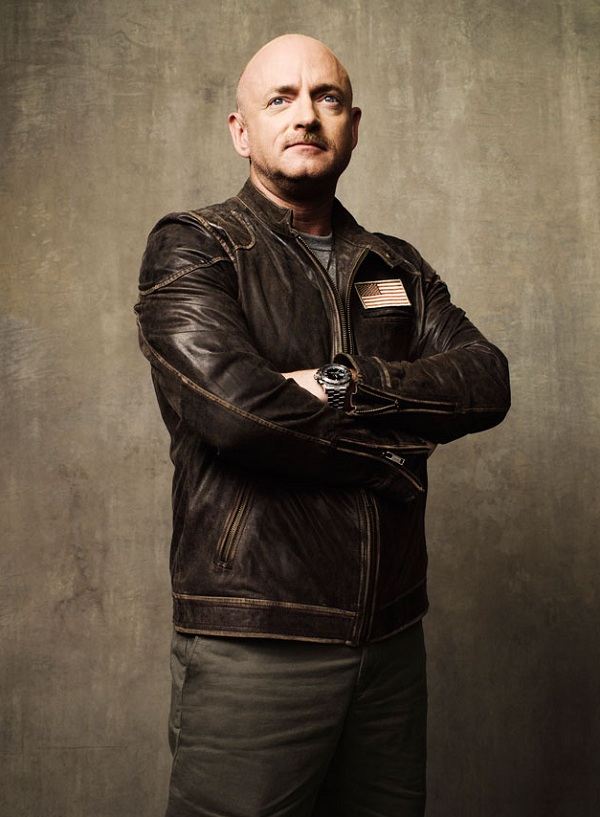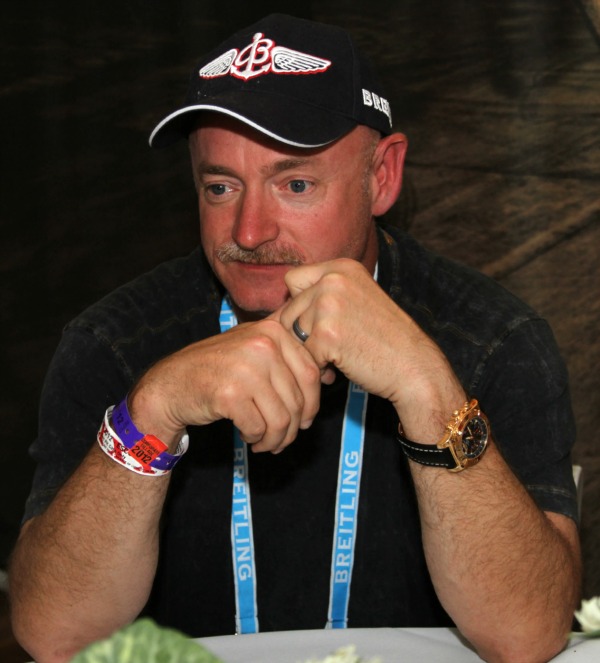
Mark Kelly probably started to get annoyed as I shot questions at him while we were stuck in the backseat of a van. I’ve learned the hard way that not everyone wants to talk about work all the time. He was a good sport though, and even agreed to speak with me again. How do you stop asking questions to an astronaut? A famous one at that. Interesting trivia: Mark not only has an identical brother, but his twin, Scott, is also an astronaut.
The good news in light of my pestering fanboy questions is that Mr. Kelly is a watch guy. Perhaps not in the way many of us are (with our intimate awareness of many brands and models), but he is the type of guy many of the watches we like are said to be designed for. For Mark, watches are tools. Essential tools, but also ones that can look good while doing their job.
Mark Kelly has a few points of fame. In the last few years he has been in the news because of his wife, Congresswoman Representative Gabby Giffords. A rather remarkable lady, Giffords bravely recovered from a typically fatal gunshot wound she was the victim of in 2011. Kelly and his family endured a long difficult period while she recovered, and still recovers today. That event even hit close to home for me. The shooting occurred at a supermarket in Tucson, Arizona where Giffords lives and represents. I used to frequent that exact supermarket while living in Tucson during my university years. When you speak with someone who had to go through that, you no doubt want to be sensitive to what they had to go through. Something most people don’t and will never understand. At the same time you find it almost inhumane not to show some type of acknowledgement for the gravity of the experience their family had to share.
Recently the Space Shuttle Endeavour traveled around California before it stopped at its final resting place here in Los Angeles. It was the last of its kind, and marked an end to the US government run space shuttle program. Kelly was the last guy to fly it in 2011 after the shuttle flew for 19 years. His most enduring legacy will be that of an astronaut. One that helped end an era, but begin a new one. While Kelly is currently retired as an astronaut, he still serves as an adviser and consults to private firms like SpaceX which are picking up where NASA left off.
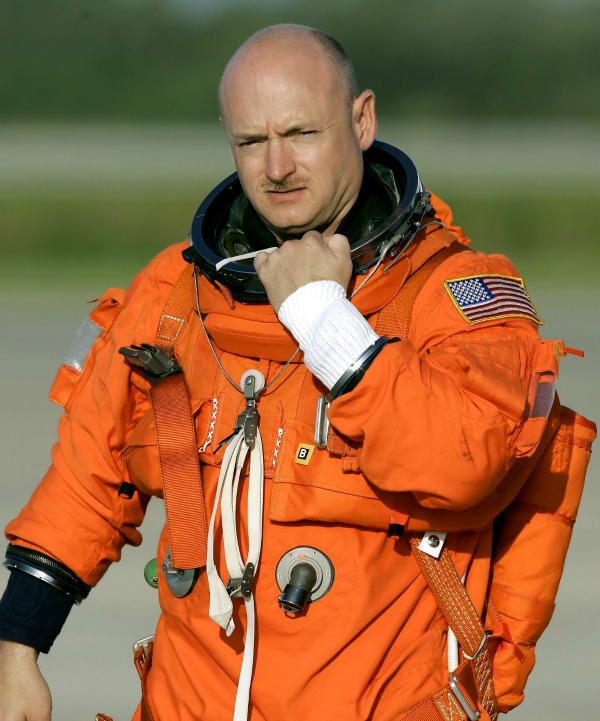
As a former Navy pilot, Kelly pointed out that space shuttles make for terrible planes. They don’t have engines to help land, and their delta wing orientation makes for “unforgiving flying.” They are basically gliders once they get back into the atmosphere he says, and they are not exactly designed with elegance.
Kelly started to get into watches while he flew for the Navy. He realized their importance very early as a necessary tool. When in flight school he was taught how to use a slide-rule, which watches like the Breitling Navitimer are famous for having. Kelly learned to use a slide-rule while in school about 25 years ago, and still today many pilots are taught how to use a slide-rule calculator as a back-up device. When flying he said that he would use one rather often, for measuring things like converting gallons to liters, as well as calculating the distance traveled as a function of looking at his speed and the elapsed time. It was actually quite handy in his opinion.
According to Kelly, having a good watch is actually very important – especially when flying some older planes. As an example, he talked about flying A-6 Intruder jets. Those seem to have 8-day power reserve mechanical clocks – that in Kelly’s experience often were really inaccurate or did not work at all. Having a good watch on your wrist meant that you could keep track of time properly, which was often essential for the mission. He discussed using his watch to time bomb drops while flying missions during the Gulf War. For him, having a good watch as a military pilot wasn’t just a luxury, but a necessity.
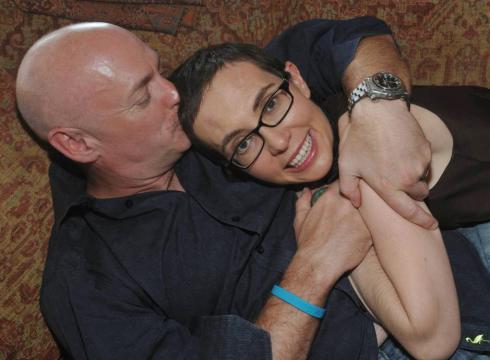
Mark had a telling watch experience during his first flight as an astronaut. In the interest of diplomacy, I won’t name names, but he was wearing a mechanical watch commonly known to be associated with US astronaut missions. The problem was that one of the hands would occasionally get “stuck” on another hand. This caused the watch to get messed up and not be reliable. It happened to occur right after the rockets went off and they were in the air.
According to Mark, being in a space shuttle or space station is all about keeping schedule, proper timing, and doing things in the right order. At about the 20 minute mark after taking off, there is a long list of errands to run. You need to close certain valves at just the right time, in the right order for example. Mission timing is absolutely crucial as Mark kept pointing out. He told me that in space, one of the most crucial tools are also some of the least expensive. Around the space station for example are lots of egg timers. Basically inexpensive countdown clocks that ring when they are done. Let’s see a luxury Swiss watch brand make some of those. “Wrist watch alarms just aren’t loud enough, and being in the shuttle or space station is actually really noisy.” Nevertheless, Kelly says he and fellow astronauts really do rely on their timepieces to keep on track each day in space, especially during crucial moments in the mission.
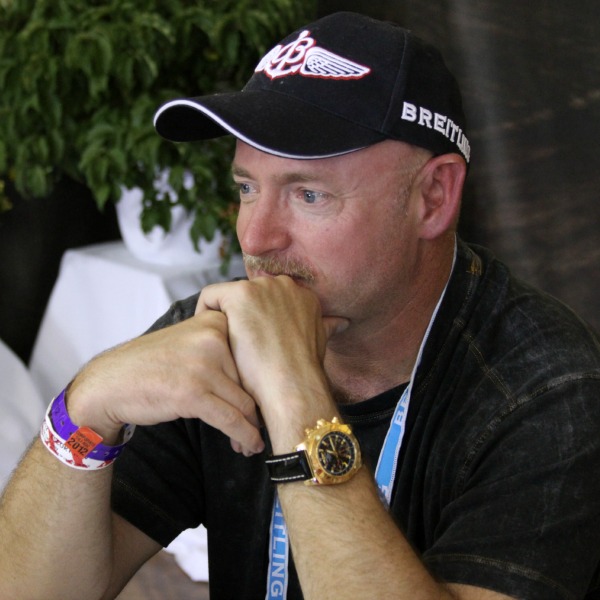
After his experience with the watch that had sticking hands, Mark went out an bought a Breitling. He said that the brand was known to make good pilot watches and specialize in aviation which is why he chose Breitling. He said he has never had a problem since and owns a few Breitling pieces including two Chronomats, an Emergency, and I believe one of the Aerospace models.
I asked Kelly how a pilot and astronaut might use a watch differently. That got us into a conversation on the types of watches pilots and astronauts might each like. As a Navy pilot, Mark said a lot of the guys are into the image part of having a “cool watch.” They like the idea of having an aviation watch to go with their job and sense of purpose. They want it to look good, and performance is of course important as well. He said the military guys are much more interested in the style side of it. Astronauts often have more science backgrounds. Kelly himself has a masters in Aeronautical Engineering. To them, timepieces are tools and are used to track procedures and routine tasks. Because what they are used for isn’t always sexy, the watches themselves don’t always need to be sexy.
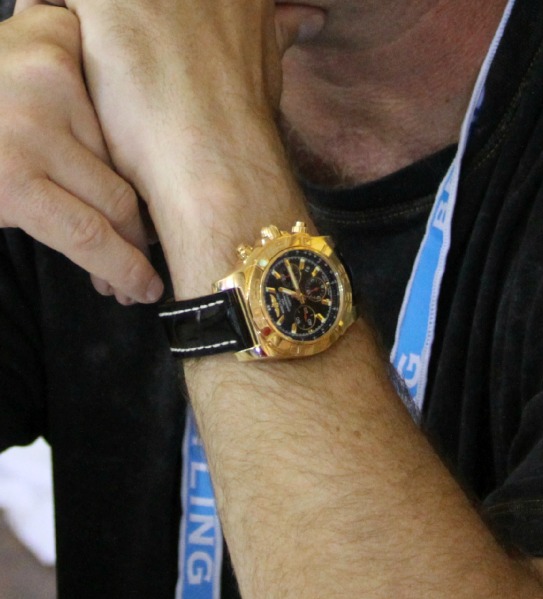
Mark pointed out an interesting feature he’d like to see on an astronaut watch. He wants to have timers and alarms that are based not on the local or current time, but on the mission time. This would allow you to start a chronograph-like feature at the start of the mission, and then set certain other timing functions based on that elapsed time. He was actually quick to point out the features his ‘ultimate mission watch’ would have. Those special timers, multiple time zones, and alarms up the gad-zoo. I can imagine all the pushers it would have.
Mark Kelly doesn’t seem to have a formal relationship with Breitling, but he has a close one. It probably helps that he is a loyal Breitling fan. He doesn’t just wear Breitling watches when around their executives. Pictures of Mr. Kelly often have him wearing one of his Breitlings, and as a pragmatist, why would he wear anything else? If the brand hasn’t failed him before, why change? It isn’t a viewpoint most watch lovers have in their interest to add variety to their lives, but I imagine Mark still sees most tools as items that can either fail or be relied on. Especially for a guy who can thank a lot of different types of machines for keeping him alive at various points in his career.
While a Navy Pilot, Kelly attended test pilot school. According to him, the difference between being a pilot and being a test pilot is that test pilots are taught how planes actually work. In fact, most of the pilots who end up being astronauts are trained as test pilots. It got me thinking; exactly how does someone become an astronaut? Since the late 1960’s a lot kids grew up wanting to be an astronaut. But just like a cowboy, there never seemed to be a class in school for it, or a major in college.
Well, Mark shed light on this mystery for me. Basically, they choose you, but you still have to apply. NASA doesn’t exactly make loud statements that they are looking for new bodies, but they quietly announce on their website or other media before that, that they are looking. Out of around 6,000 applicants each time they need people, they choose about 10-30 fresh astronauts. About half are military pilots, while the rest are a mixture of engineers and medical doctors. Yea, and there are lots of tests to pass.
My conversation with Mr. Kelly ended on a serious note – what is to become of the space program? It was important for me to ask him this question, as what I learned from the media over the last couple of years when it was announced that the government was ending the space shuttle program was confusing to say the least. Many people made it sound as though NASA was closing its doors. That isn’t exactly the case. What was at issue was government-funded manned flight missions as part of the space shuttle program. That clearly didn’t apply to robotic missions such as the recent Curiosity landing on Mars.
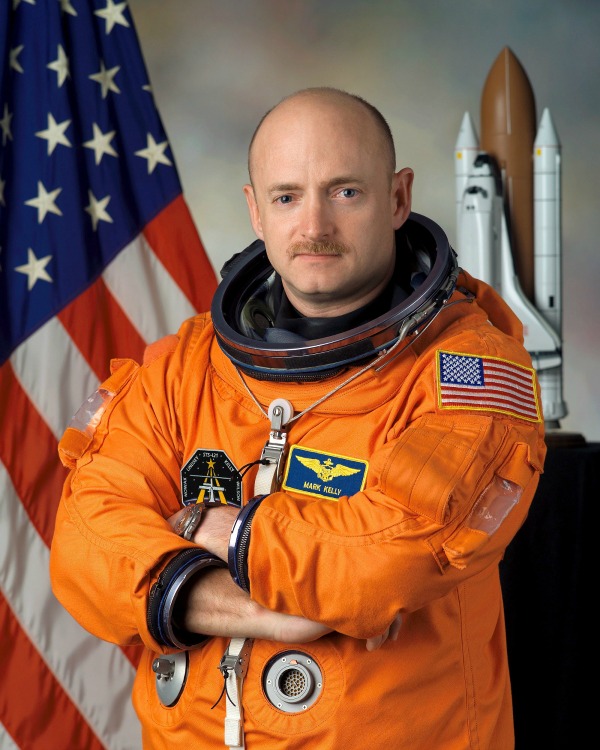
According to Kelly, the first Bush administration actually decided with NASA to end the space shuttle program because of safety. People dying wasn’t exactly what they wanted to see happening. The idea was to transition the role of space travel to the private sector, but to have it be supported by the government. Kelly explained that the idea is to end large government contracts for space-related matters, and to move to using a series of smaller, hopefully more innovative contractors who will each have more specialized roles. Kelly says that private companies such as SpaceX, and hopefully many more to come will be responsible for “crew and cargo.” That is essentially the role of getting people and stuff into space.
That makes sense, but Kelly does repeat that lowering costs is still a big part of the government’s goal when it comes to the future of the space program. While he doesn’t outright say it, I can tell that while he sees potential in private involvement aiding in innovation, there is also the problem of the profit motive. Will the lure of government contracts be enough? Will the bidding system result in simply getting the job done versus really pushing forward? It is hard to say. I’ve heard people say that if the government wanted to, it could bring back aerospace as a major employer and area of technological advancement in the United States by selectively funding research and those companies with the most promising projects. It has yet to be seen if that is what will happen. At the same time, companies such as those run by Elon Musk and Richard Branson which show promise and have the resources to actually build rockets that can go into space, are too few and far between at this point. Economically speaking, history has shown that if you want to push toward a very difficult goal and push the boundaries of what was thought possible, you need to (at least for the most part) eliminate the profit motive as a short-term goal. At least that is my opinion. Guys like Mark Kelly did amazing things, and I don’t think he was in it to get rich. Well, at least rich enough to get a good watch.

